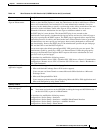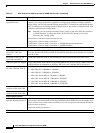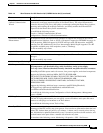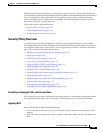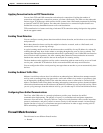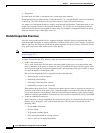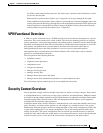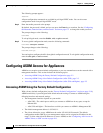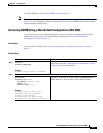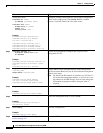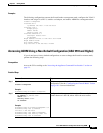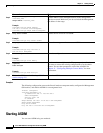
1-27
Cisco ASA 5500 Series Configuration Guide using ASDM
Chapter 1 Introduction to the Cisco ASA 5500 Series
VPN Functional Overview
For UDP or other connectionless protocols, the ASA creates connection state information so that it
can also use the fast path.
Data packets for protocols that require Layer 7 inspection can also go through the fast path.
Some established session packets must continue to go through the session management path or the
control plane path. Packets that go through the session management path include HTTP packets that
require inspection or content filtering. Packets that go through the control plane path include the
control packets for protocols that require Layer 7 inspection.
VPN Functional Overview
A VPN is a secure connection across a TCP/IP network (such as the Internet) that appears as a private
connection. This secure connection is called a tunnel. The ASA uses tunneling protocols to negotiate
security parameters, create and manage tunnels, encapsulate packets, transmit or receive them through
the tunnel, and unencapsulate them. The ASA functions as a bidirectional tunnel endpoint: it can receive
plain packets, encapsulate them, and send them to the other end of the tunnel where they are
unencapsulated and sent to their final destination. It can also receive encapsulated packets,
unencapsulate them, and send them to their final destination. The ASA invokes various standard
protocols to accomplish these functions.
The ASA performs the following functions:
• Establishes tunnels
• Negotiates tunnel parameters
• Authenticates users
• Assigns user addresses
• Encrypts and decrypts data
• Manages security keys
• Manages data transfer across the tunnel
• Manages data transfer inbound and outbound as a tunnel endpoint or router
The ASA invokes various standard protocols to accomplish these functions.
Security Context Overview
You can partition a single ASA into multiple virtual devices, known as security contexts. Each context
is an independent device, with its own security policy, interfaces, and administrators. Multiple contexts
are similar to having multiple standalone devices. Many features are supported in multiple context mode,
including routing tables, firewall features, IPS, and management. Some features are not supported,
including VPN and dynamic routing protocols.
In multiple context mode, the ASA includes a configuration for each context that identifies the security
policy, interfaces, and almost all the options you can configure on a standalone device. The system
administrator adds and manages contexts by configuring them in the system configuration, which, like
a single mode configuration, is the startup configuration. The system configuration identifies basic
settings for the ASA. The system configuration does not include any network interfaces or network
settings for itself; rather, when the system needs to access network resources (such as downloading the
contexts from the server), it uses one of the contexts that is designated as the admin context.



